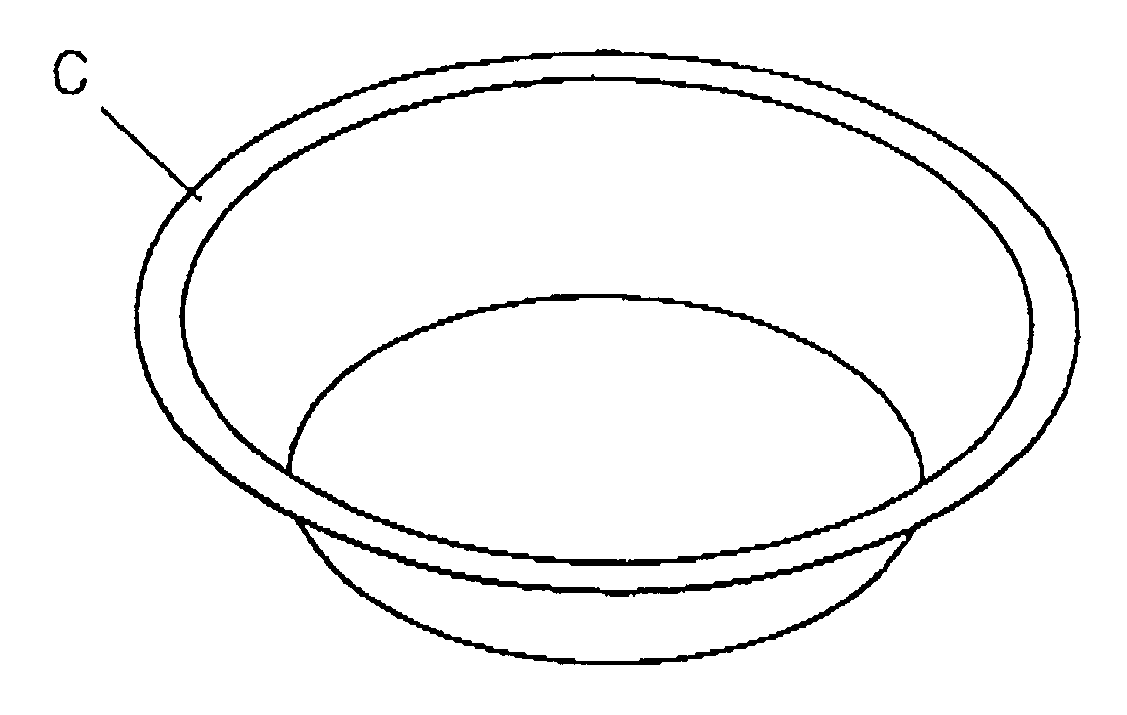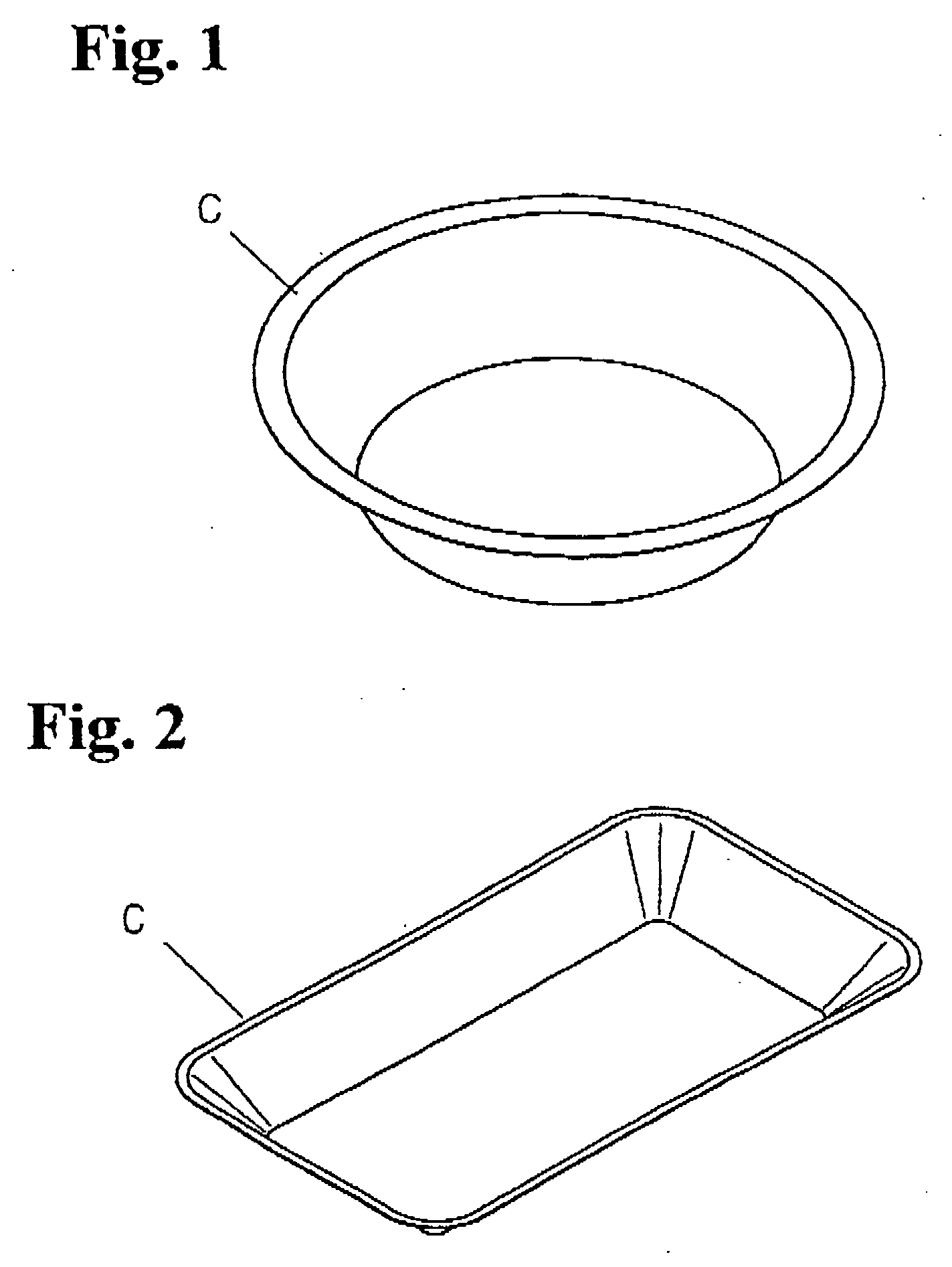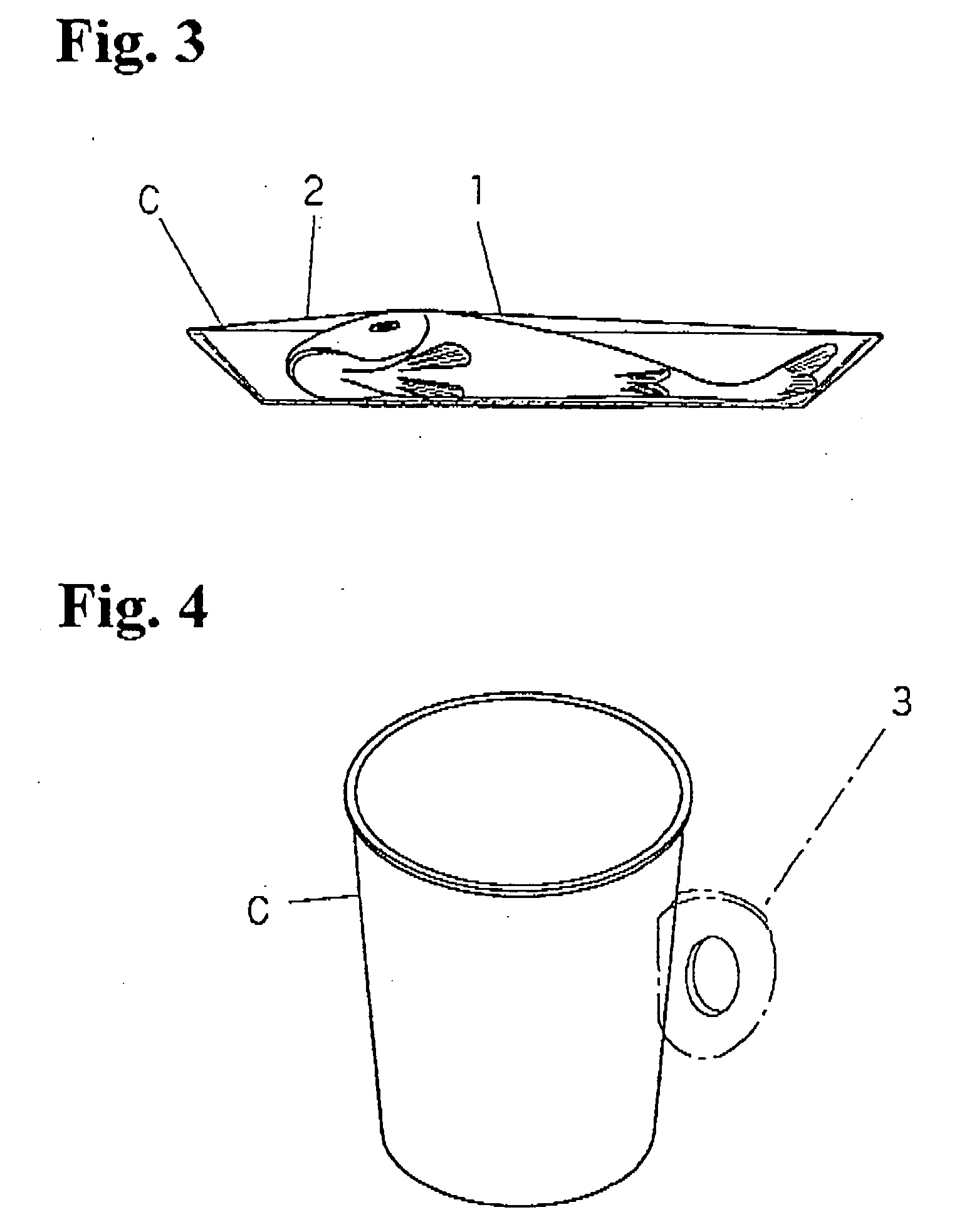Food container
a food container and container technology, applied in the field of food containers, can solve the problems of spoilage or soon-to-be-mildewy, unmarketable, and prior-art food containers formed of those materials, and achieve the effects of reducing manufacturing costs, reducing material costs, and improving soil condition
- Summary
- Abstract
- Description
- Claims
- Application Information
AI Technical Summary
Benefits of technology
Problems solved by technology
Method used
Image
Examples
first embodiment
[0015] Now, the present invention will be described referring to FIG. 1. A tray-shaped container of this embodiment is adapted for use to package a relatively dry food. A composition for forming this container comprises 20% of a bamboo fiber, 40% of a reed fiber and 40% of a Lespedeza bicolor fiber, mixed with each other. This composition was compressed and molded into a shape at a temperature of 200° C., under a pressure of 3 kg / cm2 for 24 sec. Hydrogen bonds appearing between the fibers did consolidate them together to give the container a shape of tray. In the manufacturing process, a sheet of such a composition was roughly molded at first to have a rim surrounded by a flash. Then, a second step of finishing the container was carried out to remove the flash from the rim, thereby providing a finished tray as shown in FIG. 1.
[0016] In a second embodiment illustrated in FIGS. 2 and 3, another tray is provided for use with a relatively wet food such as any pieces of meat. A compositi...
third embodiment
[0017] Now, FIG. 4 is referred to for description of a third embodiment, in which a disposable coffee cup is manufactured for use with an automatic vending machine. A composition for forming this container comprises 30% by weight of a bamboo fiber, 35% by weight of a reed fiber and 35% by weight of a Lespedeza bicolor fiber, mixed with each other. Blended with this composition are 2% by weight of a polyacrylamide as a water-proofing and reinforcing agent and 3% by weight of a silicone-based water repellent. Such a mixture was dispersed in water to form a slurry, which was then filtered through a screen to give a wet cubic article. This article was of a configuration corresponding to a finished container, and subse-quently thermally compressed into a shape at 200° C., under 3 kg / cm2 for 24 sec. FIG. 4 shows a resultant coffee cup, the reference symbol ‘C’ de-noting a body thereof. This cup may not necessarily be used in the vend-ing machine, but alternatively be combined with an amou...
PUM
| Property | Measurement | Unit |
|---|---|---|
| temperature | aaaaa | aaaaa |
| temperature | aaaaa | aaaaa |
| water repellent | aaaaa | aaaaa |
Abstract
Description
Claims
Application Information
 Login to View More
Login to View More - R&D
- Intellectual Property
- Life Sciences
- Materials
- Tech Scout
- Unparalleled Data Quality
- Higher Quality Content
- 60% Fewer Hallucinations
Browse by: Latest US Patents, China's latest patents, Technical Efficacy Thesaurus, Application Domain, Technology Topic, Popular Technical Reports.
© 2025 PatSnap. All rights reserved.Legal|Privacy policy|Modern Slavery Act Transparency Statement|Sitemap|About US| Contact US: help@patsnap.com



